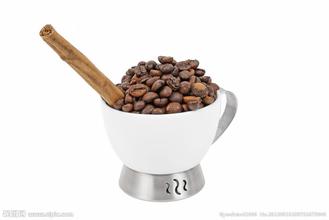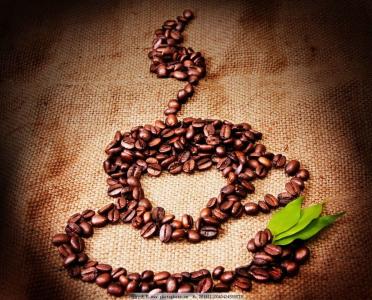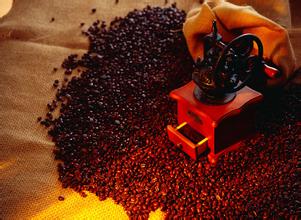Picking and handling of coffee-Brazilian coffee bean processing
Coffee picking and processing-Brazilian coffee bean processing
Yunnan, this process is mainly completed through natural fermentation. The term fermentation is not 100% accurate because no biochemical reactions occur inside the coffee beans. It is more appropriate to refer to this process as mucilage removal by biochemical reaction or hydrolysis. This reaction is caused by enzymes naturally present in coffee berries.
The fermentation time varies from 6 to 72 hours, depending on conditions such as temperature, amount of mucus, and concentration of digestive enzymes. Coffee beans can be cleaned by placing the coffee in a fermenter until the mucus is completely broken down.
The key to coffee quality is to stop fermentation at the right time, because excessive fermentation can lead to so-called stinky coffee beans. If fermentation is insufficient or too slow, butyric acid or propionic acid is produced, both of which adversely affect coffee quality.
Advantages: The fruit aroma of coffee beans can be better preserved and the price is low.
Disadvantages: Coffee beans may be contaminated with earthy smell on the ground, and the quality of coffee beans is relatively uneven.
Fresh fruit-sun dried-remove all pericarp, seed coat-coffee green beans
Note: This method is mostly used for lower grade coffee beans, and is still commonly used in Brazil, Ethiopia, Congo, Indonesia, Yemen, etc.
Water washing method is also called wet treatment method: After 12 hours after coffee picking, the outer layer of coffee fruit is removed by a pulp separator, the coffee beans are soaked in a large cement tank filled with water, the fruit is separated, and then the coffee beans are stuck in a fermentation tank for about 12-36 hours. After fermentation, the fermented coffee beans are washed with clean water, and the coffee beans are dried in a dryer or dried in the sun. At this time, the coffee beans are called "parchment coffee beans" and wait for export.
Fresh fruit--Soaking--Removing exocarp--Fermenting coffee fruit with pulp in fermentation tank--Rinsing pulp colloid with water--Drying coffee fruit with endocarp--Removing endocarp with peeling machine--Polishing seed coat--Coffee green beans
Advantages: stable coffee bean quality, beautiful color, and less impurities
Disadvantages: processing costs are too high, requiring a lot of water.
Note: Generally used for higher quality Arabica coffee beans, such as Blue Mountain, Colombia, Mexico, Guatemala, etc.

Important Notice :
前街咖啡 FrontStreet Coffee has moved to new addredd:
FrontStreet Coffee Address: 315,Donghua East Road,GuangZhou
Tel:020 38364473
- Prev

Flavor description of coffee beans treated with Panamanian Alida manor red wine grinding scale varieties
Flavor description of Panamanian Alida Manor Red Wine processing Coffee beans Flavor description: oolong tea, peach, honey, fresh and comfortable, bright and balanced, the aroma is very layered, the whole aroma is wrapped with caramel sweetness, the tip of the tongue feels sour at the entrance, but it is mild and round in the mouth, and the fruit is sweet and sweet, like swallowing a mouthful.
- Next

Description of washing flavor of Yejia Fischer coffee beans during harvest time grinding scale taste treatment method
Kochere Kirchell is located in southwest Ethiopia, 25 miles north to the famous town of Yega Chueh Fen. The production mode is mainly based on local small farmers sending the output batches to the cooperative for unified treatment. About 100000 people in the local village of Chalalacktu depend on coffee for a living, and related production activities become
Related
- Detailed explanation of Jadeite planting Land in Panamanian Jadeite Manor introduction to the grading system of Jadeite competitive bidding, Red bid, Green bid and Rose Summer
- Story of Coffee planting in Brenka region of Costa Rica Stonehenge Manor anaerobic heavy honey treatment of flavor mouth
- What's on the barrel of Blue Mountain Coffee beans?
- Can American coffee also pull flowers? How to use hot American style to pull out a good-looking pattern?
- Can you make a cold extract with coffee beans? What is the right proportion for cold-extracted coffee formula?
- Indonesian PWN Gold Mandrine Coffee Origin Features Flavor How to Chong? Mandolin coffee is American.
- A brief introduction to the flavor characteristics of Brazilian yellow bourbon coffee beans
- What is the effect of different water quality on the flavor of cold-extracted coffee? What kind of water is best for brewing coffee?
- Why do you think of Rose Summer whenever you mention Panamanian coffee?
- Introduction to the characteristics of authentic blue mountain coffee bean producing areas? What is the CIB Coffee Authority in Jamaica?

